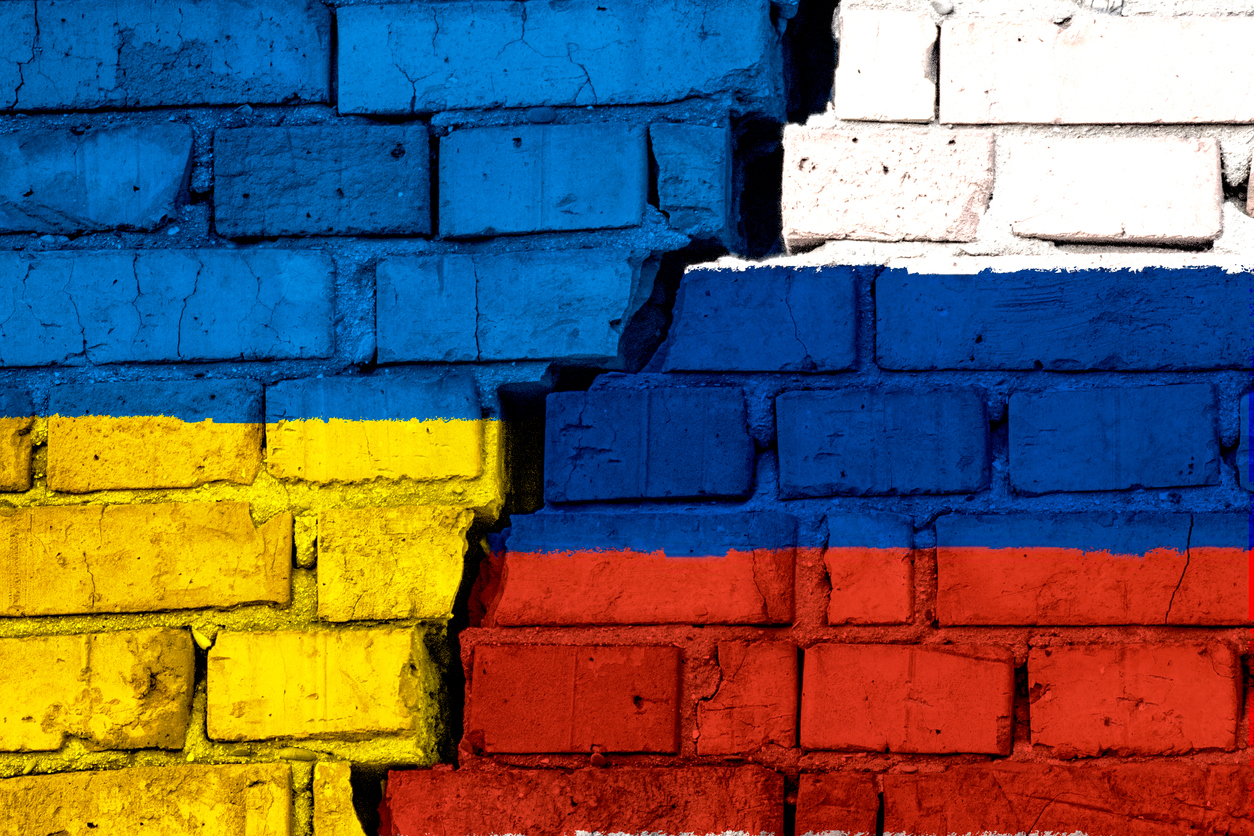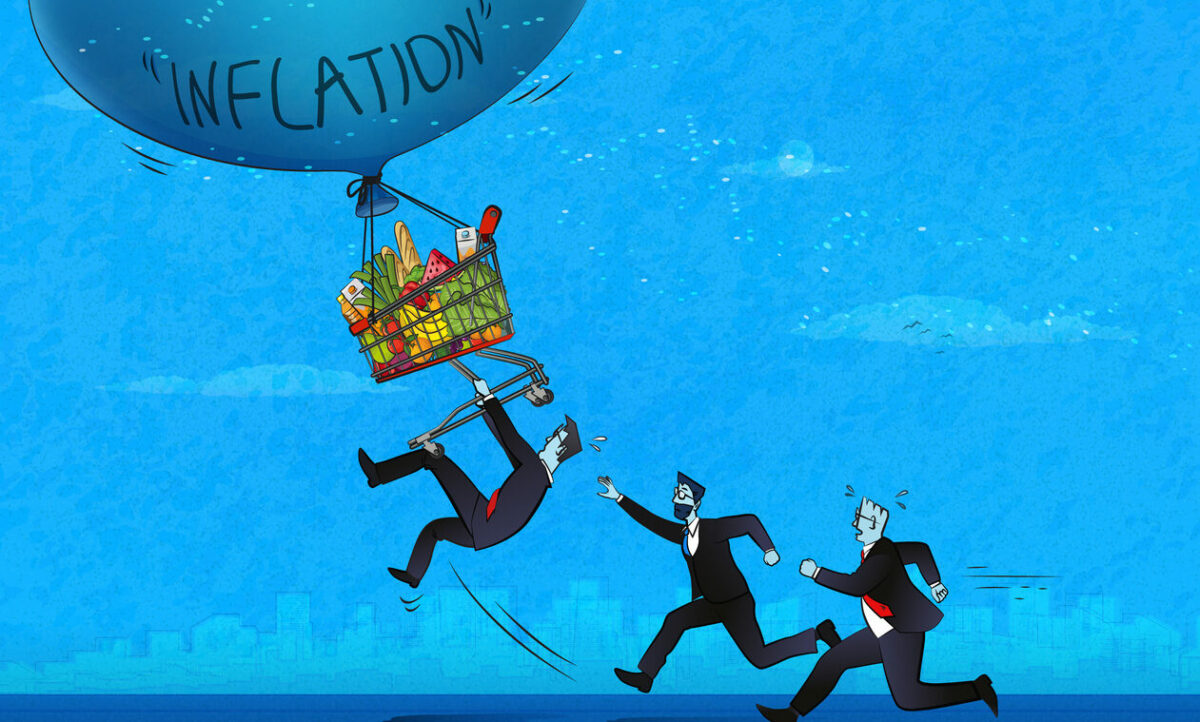Food scarcity and civil unrest: what we can learn from the past

“Poverty is the parent of revolution and crime,” so said Ancient Greek philosopher Aristotle. The meaning behind the phrase is as true today as it was when he supposedly coined it thousands of years ago. When a person’s basic needs aren’t met, they have nothing left to lose. If people don’t have access to food and shelter, what comes eventually is either civil unrest under the current system, or a new set of rules altogether. When enough people are disenfranchised, it’s often both.
Privation has been the igniting flame for many of history’s largest revolutions. It was a driving force behind the French Revolution of the late 1700s, when sky-high taxes and poor harvests pushed the labouring classes to revolt. A lack of bread due to rationing was the motivation behind the first Petrograd demonstration, which would eventually lead to the 1917 Russian Revolution. And soaring food prices were an integral part of the Arab Spring uprisings of 2011.
So intricately linked is the price and availability of food to unrest, economists have claimed to be able to work out the exact mathematical correlation between the two. In 2022, huge swathes of the world are grappling with food insecurity. In some places, the threat of civil unrest is a looming possibility. In others, it has already begun.
Hunger and unrest in today’s world
There are several factors which are currently putting huge pressure on the global food system. Among the most pressing are the war between Ukraine and Russia, which is leading to food scarcity in some parts of the world and dramatic inflation in others; increasingly volatile weather caused by climate change; the weakened supply chains and workforce shortages which have yet to fully recover from the COVID-19 pandemic.
Back in May, United Nations World Food Programme (WFP) Director David Beasley issued an ominous warning that these factors could coalesce and prompt “riots, famine, destabilisation, and then mass migration by necessity” if left unchecked in the years to come.
However, the reality is that many countries are already seeing unrest. As WFP Spokesperson James Belgrave explains to Food Matters Live, parts of the Middle East, Sri Lanka and Sierra Leone have already experienced unrest in recent months. With the scale of the problems at hand, there is a considerable chance that the unrest which lies ahead could be unprecedented in scale and severity.
“The 2007-2008 world food crisis, where a massive global food price spike coincided with high youth unemployment and structural macroeconomic problems, triggered food riots causing political instability and social unrest in 48 countries, particularly in Asia and Africa,” James says.
“But the current situation is far worse than in 2008, with COVID-19, massive income losses, record inflation, supply chain disruptions, and a record debt burden. Add to these large-scale protracted conflicts, as well as more intense and frequent climate shocks.”
The historic precedent of ‘food riots’
Few historians will be surprised by the prospect of civil unrest caused by hunger and food inaccessibility. In their essay A Political Economy of the Food Riot, Raj Patel and Philip McMichael call food rioting “one of the oldest forms of collective action” in the world.
Our past is filled with events which set a grim precedent – aside from the aforementioned French and Russian Revolutions and the Arab Spring, other examples include the Boston Bread Riots between 1710 and 1713, the 1766 food riots in England, the Japanese Rice Riots of 1918 and the series of protests on food prices in Poland in the 1970s.
Even though we aren’t yet a quarter of the way through, the 21st century has already seen two such instances where twin spikes in food and fuel prices led to instability. According to Cullen Hendrix, Professor at the Josef Korbel School of International Studies at the University of Denver and Senior Fellow at the Peterson Institute for International Economics, a similar confluence of issues is occurring now as with the periods between 2007 and 2008, and 2010 and 2011.
Because we have so many examples to look back on, it is possible to begin to understand some of the common factors which lead to food-related instability. “Typically, unrest occurs in countries that are net importers of both food and fuel – but it also often occurs against the backdrop of a government’s inability to draw on macroeconomic policy tools,” explains Cullen. Such tools would include things like subsidies, targeted spending and relief or price caps for certain commodities.
Ida Rudolfsen, Senior Researcher at the Peace Research Institute Oslo (PRIO), concurs. She tells Food Matters Live food-related instability is usually preceded by events like: “Rapidly increasing food prices in combination with factors such as high rates of unemployment, low economic growth, import dependence, various forms of political mismanagement, and a consumer-based urban middle class who have mobilisation potential.”
The relationship between food and peace
The wealth of examples we have of civil unrest – both past and present – paints a picture suggesting food and peace are precariously balanced. In reality, food is usually one cog within a wider malfunctioning machine. However, because of the prominence of food in our daily lives, and the fact it is essential for our survival, it is an easy ignition point.
“Food-related unrest tends to get a lot of attention in the media due to its often-explosive nature and ability to mobilise large segments of society,” says Ida. “However, so-called ‘food riots’ are more often than not about much deeper political and socioeconomic issues within states.”
Food, after all, is one of the most basic of commodities which states have a duty to facilitate access to. Put simply, if governments can’t get this right, there’s a strong likelihood they’re also failing elsewhere. Failure to support citizens through famine, food price hikes, poverty and the like, effectively erodes confidence in institutions – paving the way for unrest and revolt against governments which are seen to not have their priorities straight and not caring for their people.
Additionally, as Cullen points out, there is a universality to food which which is not seen in other political tension points. Not every person has a stake in, or opinion on, issues like prison reform, education funding or even climate change. Everyone, however, needs to eat.
“Even the least politically aware person is engaged in the topic of food and fuel price hikes and accessibility,” Cullen tells Food Matters Live. “And that is a powerful coordinating mechanism.”
Can we predict food related civil unrest?
There are conflicting opinions as to whether trying to predict civil unrest is a worthwhile endeavour – or even if it really works. As previously mentioned, there are many economists that claim to be able to correlate the price of food and the potential for civilian unrest. Such projects usually utilise data points like the FAO Food Prices Index, and plot this against instances of instability. This can then be extrapolated to predict future events.
Ida says the exercise is a useful one, “mostly because this is likely to raise awareness of the potential challenges of increasing food prices.” But we shouldn’t rest everything on these mathematical models, she warns. Civil unrest, by its nature, is very unpredictable. Mass protests and unrest can spark well before, or well after, food prices hit a certain point.
Cullen, who also warns against solely using mathematical models to predict the future, adds: “Eventually, most models created end up not working – there are plenty of examples of models which once predicted events accurately which now probably have worse odds than a coin flip.”
What’s more, Cullen says such events are likely to get even harder to predict as factors like the climate crisis worsens and volatile weather impacts global agriculture.
Responding to unrest, and preventing it in the future
With the prospect of unrest bubbling under the surface of a great number of countries during this period of global food crisis, it is just as useful to look at how historic examples were ameliorated, as it is to study how they came to be. It is, to a certain extent, in governments’ interest to keep the peace within their country.
“We usually think of states reacting in an either/or way, either repress or accommodate,” explains Ida. “It seems, however, that states do a bit of both to curtail unrest when food prices spike.
“[States] would typically provide economic relief by measures such as removing import taxes, handing out a larger amount of food stamps [in countries like the US], or just simply hand out cash as we saw happening in several countries with high reserves of natural resources, like in Kuwait, Qatar, and the UAE, when the Arab Spring was under way. Whether this actually improve the lives of the inhabitants in the long run is another question, as these tend to be more immediate and short-term policies to avoid escalation.”
To truly put a stop to food related civil unrest, Cullen says support from government must be specific and targeted. While everyone is likely to welcome food prices decreasing, efforts for things like subsidies and food stamps should be concentrated on those for whom it will make the most difference, he says. Additionally, support packages for food producers should be food sector specific, rather than for general businesses.
The effect of the cost of living crisis
Above all, Cullen says one of the best food-related ways for governments to boost food security among its people is through school feeding programmes. “Missed meals can have lifelong impacts on the wellbeing on children,” he says. “School feeding programmes then are both a good policy, but also have positive, larger health and social ramifications.”
Such programmes are being called for, as the UK suffers through a severe cost of living crisis. The crisis, which has seen the return of the disastrous ultimatum of ‘heat or eat’, is already pushing people to defy laws by shoplifting and threatening to not pay their energy bills.
While much of the opposition towards the Government’s perceived non-action has so far been peaceful – through demonstrations which have attracted thousands organised by groups like Enough is Enough and Don’t Pay UK – there is growing concern that this can only last for so long. As consumer champion Martin Lewis said in a recent Telegraph interview: “When people can’t afford food, they get angry – civil unrest isn’t far away.” The sentiment is an echo of the warning Aristotle gave thousands of years ago.
Additionally, the added pressure that food sector-specific industrial action could bring, only stands to complicate matters. Strikes like that of Felixstowe Port workers or Budweiser staff have so far caused minimal impact on the food chain at large. However, if wages continue to languish well behind the rate of inflation, there is every chance this could worsen.
As the Ukraine-Russia war continues, the climate crisis looms, and the cost of living soars, it is as important as ever for governments to ensure its people are fed appropriately. Failure to implement robust measures to protect food systems, and access to them, could lead to food riots like we have seen so often in the past. As the saying, attributed to Vladimir Lenin, goes: “Every society is only three meals away from chaos”.








